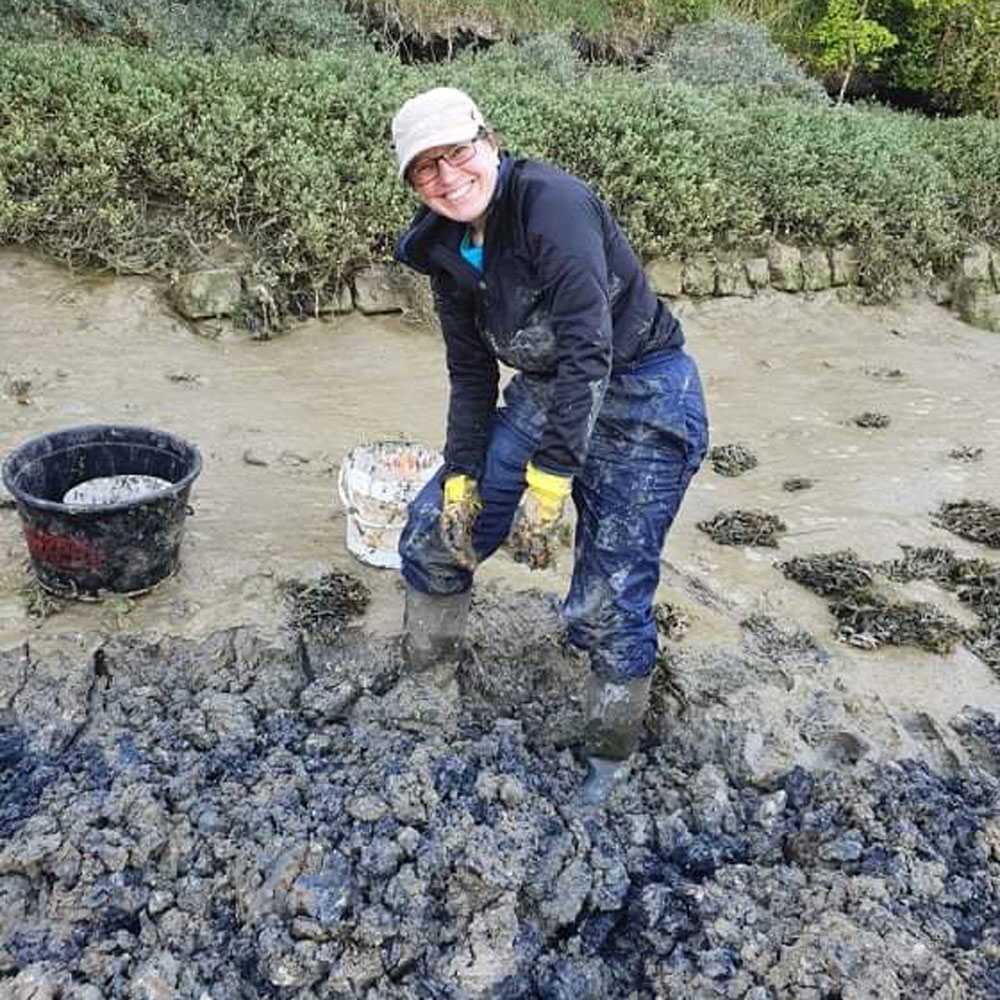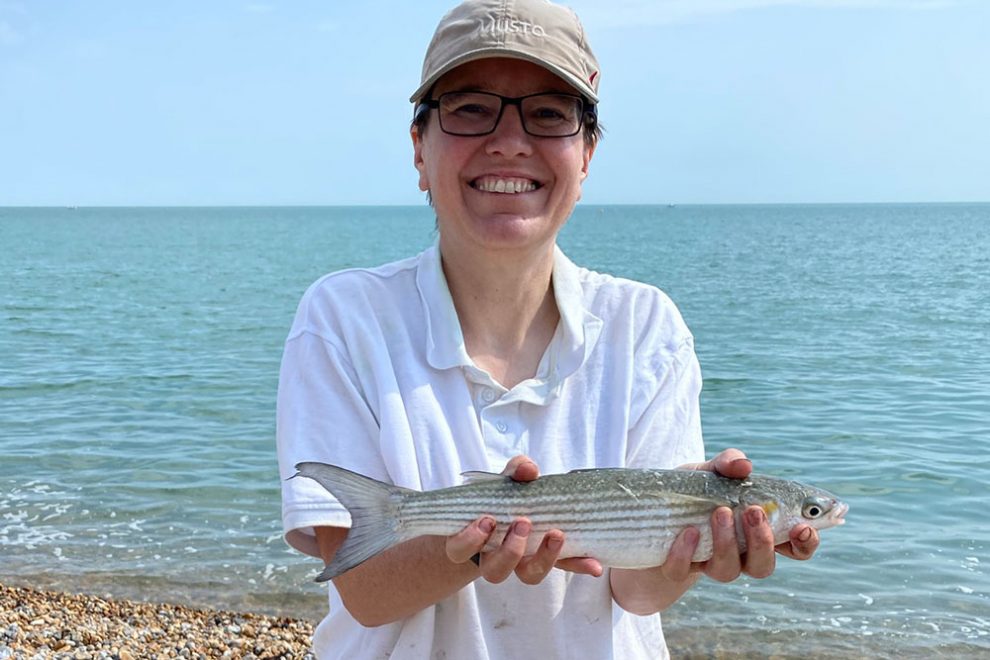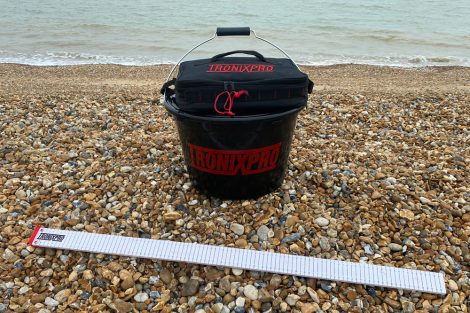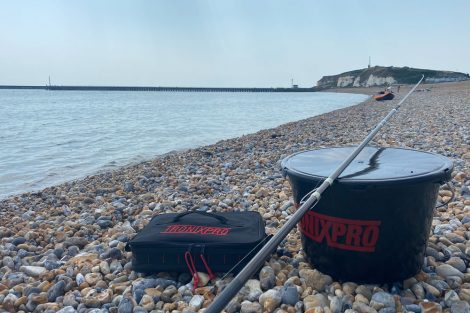There is something very exciting about fishing for summer species around British waters. On the Sussex coast, we see the arrival of smoothhounds, bass feeding in decent numbers, sole, and, of course, mackerel to name just a few. Every angler has their own favourite species to target. For me personally, sole and flatfish generally are a particularly much-loved catch and I always feel excitement when heading off to the beach knowing that they are about. One of our more exhilarating summer fishes to target is the mullet. Considered an elusive fish by some, they are hard-fighting for their size and are a real pleasure to catch.
For me, part of the appeal of summer fishing is the opportunity to travel light, carrying minimal tackle and using lighter rods and reels that allow our smaller species to show off their fighting abilities. The Tronixpro Banzai Mullet or Tronixpro Banzai Multi Tip are both great options for this type of fishing, with their versatile push-in tips offering excellent bite detection. These rods really are configurable and ideally suited to the conditions in which our smaller summer species are on the feed.
The Venue and Tackle
My trip to a local beach, Tidemills near Seaford, followed the travel-light approach. Armed with one rod, a fixed spool reel, three rigs and three 4oz weights, I had my sights set on catching a golden grey mullet. I also took with me a Tronixpro Bait Pak, to keep my bait in tip-top condition on what would turn out to be one of the hottest days on record in the UK, and a Tronixpro Bucket, with its tray and lid. Whilst Tronixpro make a specialised Bucket Cool Bag that fits neatly inside the tray, today I opted to use the tray for storing my rigs and weights plus a few other essential items like scissors and a disgorger. The Bait Pak includes really handy Velcro straps that allowed me to attach it securely to the bucket’s handle as I made what felt like a rather long walk from the car park to the beach in 35 degree heat! The bucket was also perfect as a make-do rod rest, following my travel-light philosophy for the day. This set-up was ideal for the moments when I was not holding the rod in eager anticipation of a bite!
Perhaps the most important detail to get right, along with bait selection, was my rigs for the trip. The travel-light approach extends into my rig choice for mullet. Small hooks and light lines, accompanied by what might be perceived as on-the-heavy-side 4oz leads. Lighter leads can be used, but 4oz assists with catching mullet from the beach by providing some resistance to set the hook when a mullet swallows the bait.
The main rig body was 0.4 Tronixpro Blackout memory-free line, with 0.3 Blackout line for the snoods. With safety on the beach paramount, I was not power-casting using such a low breaking strain rig body. I opted for a two-hook Wessex Rig, keeping the bottom hook flowing, using size 6 Tronixpro Wormer hooks. The top snood was 20 inches long, and the bottom snood was 23 inches. One of my rigs included a white pop-up, to add a bit of extra movement. The rig used three rolling swivels, two size 14s for attaching the snoods to the rig body, a size 8 for the running aspect of the rig accompanied by a quick change link for attaching the lead. To finish off the rig, all that’s needed are a few beads (black beads help to keep the rig stealthy), and some glue tube with Tronixpro Rig Glue to hold the top swivel in place. Most of these items can be purchased in max packs, which offer great value. For these really light rigs, in my opinion you cannot beat using Tronixpro Slim Rig Winders on which to store them, again matching my travel-light approach for the day.
Getting the Bait in the Water
After reaching the beach, and taking a large, cool drink of ice-cold water, I began enacting my plan of attack. Knowing that plenty of mullet had been caught the day before, starting to appear about an hour before high water, I had arrived with ample time to get set up and ready to catch my target species. Today, high water was around 15:30 and I planned to fish from 14:00 to 16:30. That was plenty long enough in the heat bearing down on the whole of the UK, and also coincided with the peak time for catching mullet. Thankfully, when I arrived at the beach it was not too busy with others out enjoying the seaside and, by leaving at 16:30, I knew I would beat the crowds arriving after their day at work. Added to that, the cool sea breeze was wonderfully refreshing. Perfect!
So, I carefully unwound my three rigs from the slim rig winders and attached the 4oz leads. The hooks were each baited with about eight good-side maddies, sometimes called muddies, red rag or harbour rag. The first four or five worms were threaded up over the eye of the wormer hook and the last few kept on the shank. These hooks are really sharp and super strong for their size. I like the wire gauge, too, and the size of the eye means it does not damage the maddies when they are threaded up the line. I suggest avoiding line thicker than 0.3 for the snood, as it creates a larger knot which can cause the worms to tear when threaded over the knot that attaches the hook.
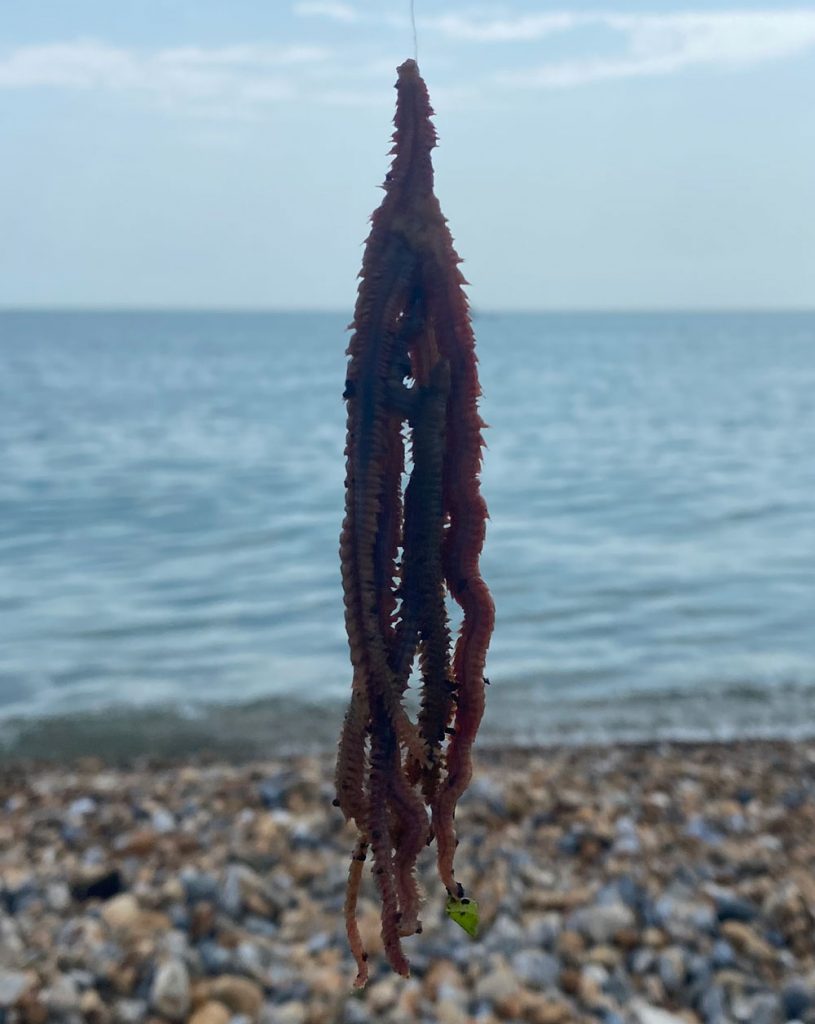
Knowing this beach well, I was aware that the spot I had decided to fish had sand about 30 yards from the high water line. I varied my casting distances from about 35 yards to 60 yards to find the fish, expecting them to be moving along the sand not far from the shingle line. It’s always well worth trying different distances until bites start to develop, to pin down where the fish are feeding.
Adrenalin Inducing Bites
With my three rigs baited and ready, my first cast went out and I waited, anticipating the mullet arriving for their afternoon meal. Mullet give a very distinctive bite, gentle tugs, plucking at the worms until BAM, the rod tip goes around, and the line slackens, causing adrenalin to pump and your heart to race. A quick reaction to wind in any slack and make connection with the fish is needed to ensure the hook sets and you’re in!
Keen to keep a nice, strong scent trail, I decided that no bait would be in the water longer than ten minutes. Today I also set out to undertake an experiment with bait choices. On one rig I put farmed maddies, another had wild maddies, and the third rig had one hook for each, dug and wild. I guess my past life as a research scientist is never far away! I was keen to find out what difference, if any, the two choices of worm would make to my catch rate.
At about 15:15, I noticed my rod tip start to twitch. Could this be the golden grey mullet I have set out to catch, showing an interest in my bait? Holding my rod still, I waited patiently for the bite to develop, not wanting to strike too soon and pull the worms from the fishes mouth before it had engulfed the hook. Twitch, twitch, my heart was beating a little faster in anticipation. Then bang, slack line!
I wound down quickly to make contact with the fish before it had a chance to spit out the hook, then gently pulled back to ensure the hook was set. Battle on, my rod tip bent around nicely, the fish swimming down along the beach in its bid for freedom. A short while later, I can see the mullet coming in towards the shore. Making its final throw of the dice to escape, it pulled hard to the right. I was carefully keeping my rod tip low to give myself the best chance of winning the battle as the mullet tried to pull line from the spool. Phew, my drag was set just right, giving the fish a little line, so the hook did not pull out. Moments later, my first golden grey of the summer slid up the shingle and onto the beach next to me.
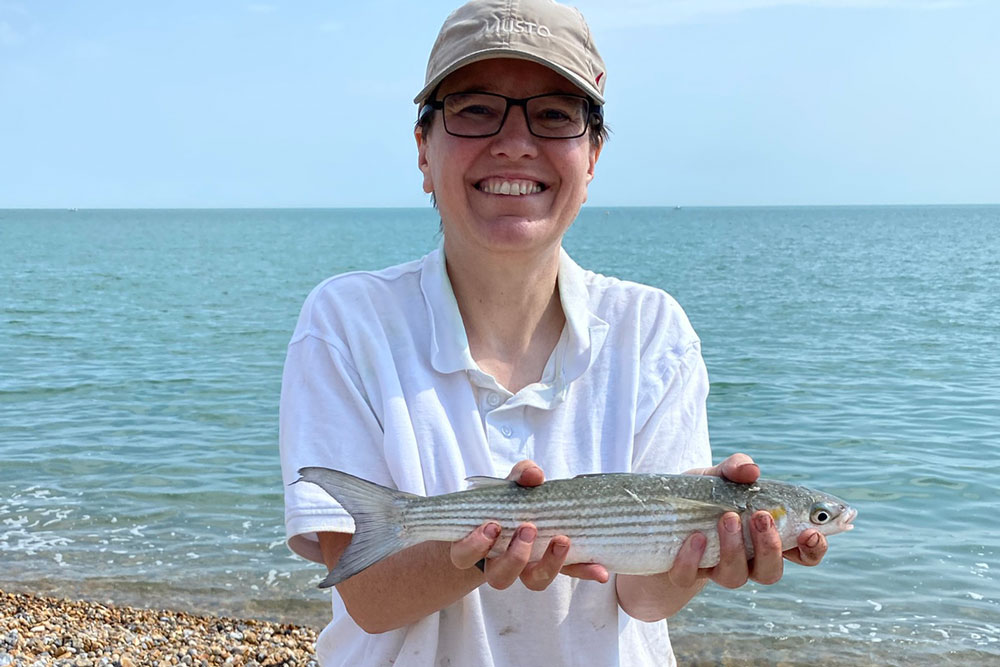
Filled with the excitement that all anglers experience when they have carefully planned a session and it comes good, I unhooked my golden grey mullet and moved it from the shingle to some water I had earlier placed in my bucket. After a couple of photos, I was keen to get my next bait out in the water. This first fish hit the bait about 45 yards out, so I cast my next rig slightly further and retrieved it a little to set it down just where I wanted it. Over the next hour, I managed to land a further two golden greys, and dropped just one. I was buzzing, mission accomplished, my carefully planned session had been a total success.
So, how did my bait experiment play out? I can comprehensively say that the three golden greys I caught were all on the dug maddies. Not only that, the rig containing a mix of dug worms on one hook and farmed on the other did not attract any interest, and neither did the rig containing only farmed worms. A friend and fishing-mentor of mine, Tony McDonald, believes that farmed worms give off a entirely different scent that can overpower the attraction of dug maddies and are a poor substitute. My mini-experiment seems to back up that conjecture.
Hopefully, the golden greys will stick around until October and I am eagerly awaiting plenty more beach days catching them this summer. As for my early start, well, that was for digging bait! Yes, I got covered in river mud, but it was well worth it.
